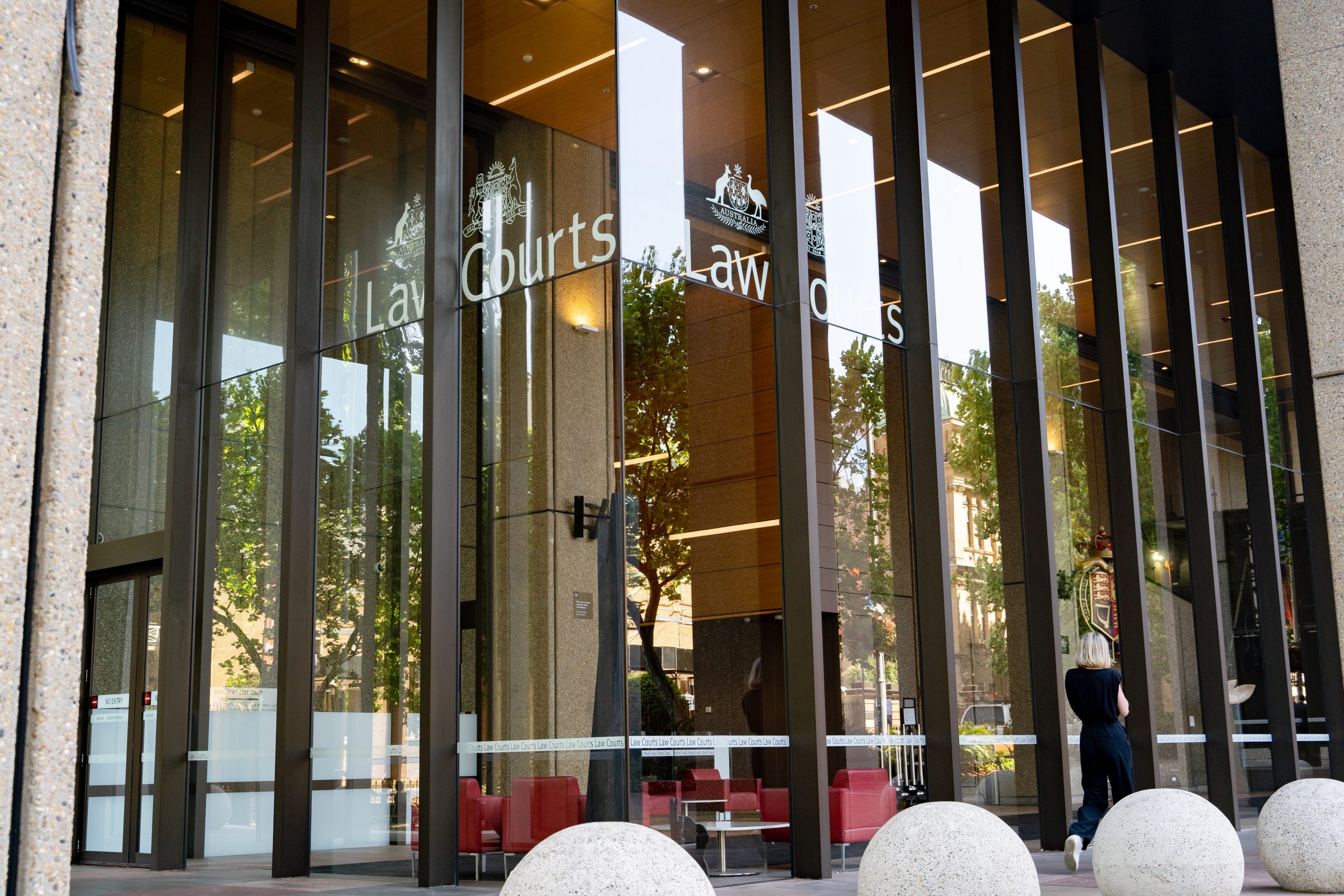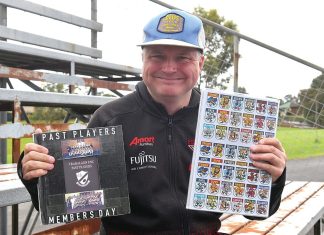By IAN WHITEHEAD
MORWELL Magistrates Court, 3.30am, Wednesday, June 4.
USA network CNN is reporting direct from Morwell. Channel 7 reporter, Teegan Dolling, wears a red pant suit, the only splash of colour in the fog shrouded, dimly lit concourse. The cable channel relays the pictures are ‘live,’ from “Morwell. Australia.”
For viewers world-wide, Morwell could be east of Adelaide or in far north Queensland. They care not. Their interest is on whether a 50-year-old woman from rural Australia intentionally killed three people with a beef wellington dish laced with the powder of death cap mushrooms.
The accused, Erin Patterson, has not been flattered by reporters’ photographic angles. Keyboard warriors, water cooler experts and straw polls have imposed a pre-trial verdict of guilt. The Latrobe Valley en-masse has cast itself as the self-appointed Hanging Judge.
The public lines up outside a chilly Magistrates Court from 6am.
New acquaintances are met by the simple greeting “is this the end of the line?” Attendees have driven from Melbourne and all parts of Gippsland. A barrister from Sydney stays at a local caravan park. The Age newspaper rents out an apartment in Traralgon. A pair of early 20s Morwell girls pay tribute to the willowy good looks of the junior barristers, declaring them out of their league, and speculating, for reasons beyond this writer, on the price point of their shoes.
Seating in Court 4 is limited.
Court staff were gracious, opening the doors to the public right on 9am. At precisely 10.10am for the 10.30am start, the family troop in from an ante room, as court staff accorded the number of seats available to the number standing in line. Usually, every seat is taken.
Defence barrister Mr Colin Mandy, a small ruddy faced man with a quiet self-contained demeanour, eased his way through our ragged queue. “Excuse me mate. Excuse me mate.”
Crown Prosecutor Dr Nanette Rogers, on a wordless mission, possessed more the hustle-bustle gene. Dr Rogers looks under pressure. She must prove her case beyond reasonable doubt.
Journalists were allocated by ballot; a meagre six places.
Our local editor, Liam Durkin was the lucky man a few times, but The Age, court reporter, Erin Pearson landed the gig on multiple occasions. Helen Garner, author of court room drama, House of Grief and past court writer for The Monthly attended periodically.
I asked her if she would craft a special piece. “Oh, I don’t think so, do you?” she gently said, “The evidence is so dense. Think too I am a little old.” But her shrewd eyes darted all about the courtroom and she took notes. Perhaps a podcast.
Supreme Court judges have an understated aura, declaring, “I own this courtroom.” So, it was with Justice Christopher Beale.
Younger than most taking this post, with his neatly combed black hair, greying at the edges. Occasionally, he would remove black-rimmed glasses, staring down and gently admonishing both defence and prosecution for legal indiscretions; apparent blunders of law that few in the public gallery could comprehend.
There were challenges. A recalcitrant juror was booted off in the second week after discussing the case with others. A protester wearing an expansive Elon Musk jacket over a yellow T-shirt, emblazoned with the word, ‘Truth’ interrupted proceedings with a personal rant against Justice Beale. He was quietly removed, and the judge continued sans fuss or rancour.
A cavalcade of professionally attired medical and hospital reception staff relayed the chronology and conversations of the accused’s post dinner presentations. What came across as a bland Q&A would come back to bite, as inconsistencies in conversation recall morphed into key prosecution evidence.
The TV monitor presented pre-recorded evidence extracted from the accused’s two children.
The small nine-year-old girl was so swamped by the large green sofa chair, her legs swung mid-air. The teenage boy, muttering and barely audible, was quizzed for a ponderous hour and 40 minutes. The reporters take of negativity between Simon and Erin Patterson accounted for barely a minute. Like slow TV, in a criminal trial, patience is required.
When world mushroom expert, Dr Tom May… known as Funky Tom… was called, he was nowhere to be found. He had gone for a walk to the Morwell Rose Garden. With grey ponytail and baggy trousers crunched up around the ankles, his lofty angular bearing spoke volumes to the academic expert he was.
World-wide death-cap mushrooms are hard to find, but Dr Tom located them in pockets near Outtrim and Loch, recording his findings on the i-naturalist website. The accused’s phone did ‘ping’ in both locations, but we learnt from communications expert Dr Matthew Sorell, that due to topographical quirks, theoretically at least, the tell-tale ‘ping’ can emanate from a tower 100 kilometres away.
Woolworths are off the hook after confirmation that no mushrooms sold in Woollies originate in natural outdoor soil.
The mystery Asian grocer from where the death-caps were allegedly purchased remained just that: a mystery.
The prosecution said that no such grocer exists.
The Health Department was sent on a wild goose chase and the case is strong that Erin Patterson intentionally foraged death cap mushrooms at Outtrim and Loch in order to poison her guests.
Lead investigator, Detective Leading Constable, Stephen Eppingstall is micro-managed through volumes of evidence, providing helpful or terse responses depending on who is asking the questions. But for a confident and competent professional, he was totally flummoxed when asked about a specific column on a Woolworths Rewards Statement. The brief hesitation was enough for a jury member to call out, “I know.” Justice Beale advised such inputs were best kept for the jury room. For the jury, this was not a first offence.
The 53 witnesses were bookended by Simon and Erin Patterson.
After his evidence, Simon Patterson did not appear in court again. Detective Eppingstall and sole dinner survivor Pastor Ian Wilkinson attended throughout the trial.
Erin Patterson occupied the witness box for a marathon eight days.
Quizzed on foraging, mobile factory re-sets, coloured plates, conversation recall, recipes, dehydrators, medical appointments, oven trays, websites, school enrolments, faked illnesses, body re-imaging, child support wrangling, relationships and tending animals, her rebuttals of all incriminating evidence was nerveless.
No nervously shaking hands. Calm, modulated voice. Spoke in full succinct sentences. Perhaps unwisely, Ms Patterson was moved to question the prosecutor.
“Dr Rogers, within this record, is that the second visit (to the i-naturalist) website that I was talking about?” Dr Rogers responded tersely with, ” Ms Patterson, I am the person who asks the questions.”
Justice Beale took more than three days to brief the jury. Putting aside formality, he adopted the tone of friendly counsellor. Raising his hand high above his head, he indicated how high was the bar, “beyond reasonable doubt.” He summarised the evidence from both perspectives but kept to his theme… you are the sole judges of the evidence.
At the final mid-morning break, Justice Beale raised his eyes to the jury.
“I have just read page 329 of my briefing,” he smiled. “The final page is 365.”
As the court and jury rose for the final time, there was a palpable feeling of relief. Over ten weeks the public gallery had cultivated a family ambiance. The family’s most admired ‘son’ Ian Wilkinson, stood, smiled and shared a little aside with a family member.
If the tussle between Mr Mandy and Dr Rogers were a boxing match, the defence would win on points.
A number in the public gallery family had switched sides, impressed by Mr Mandy’s strategy of calmly pick-pocketing Dr Rogers selective evidence. Some sat on the fence. Most though punted on… and hoped for… that final verdict. Guilty on all charges.
In order to appeal, Mr Mandy must now identify irregularities in the process by Justice Beale, who to the untrained eye, was meticulous.
But highly likely this is merely the end of Part 1.











